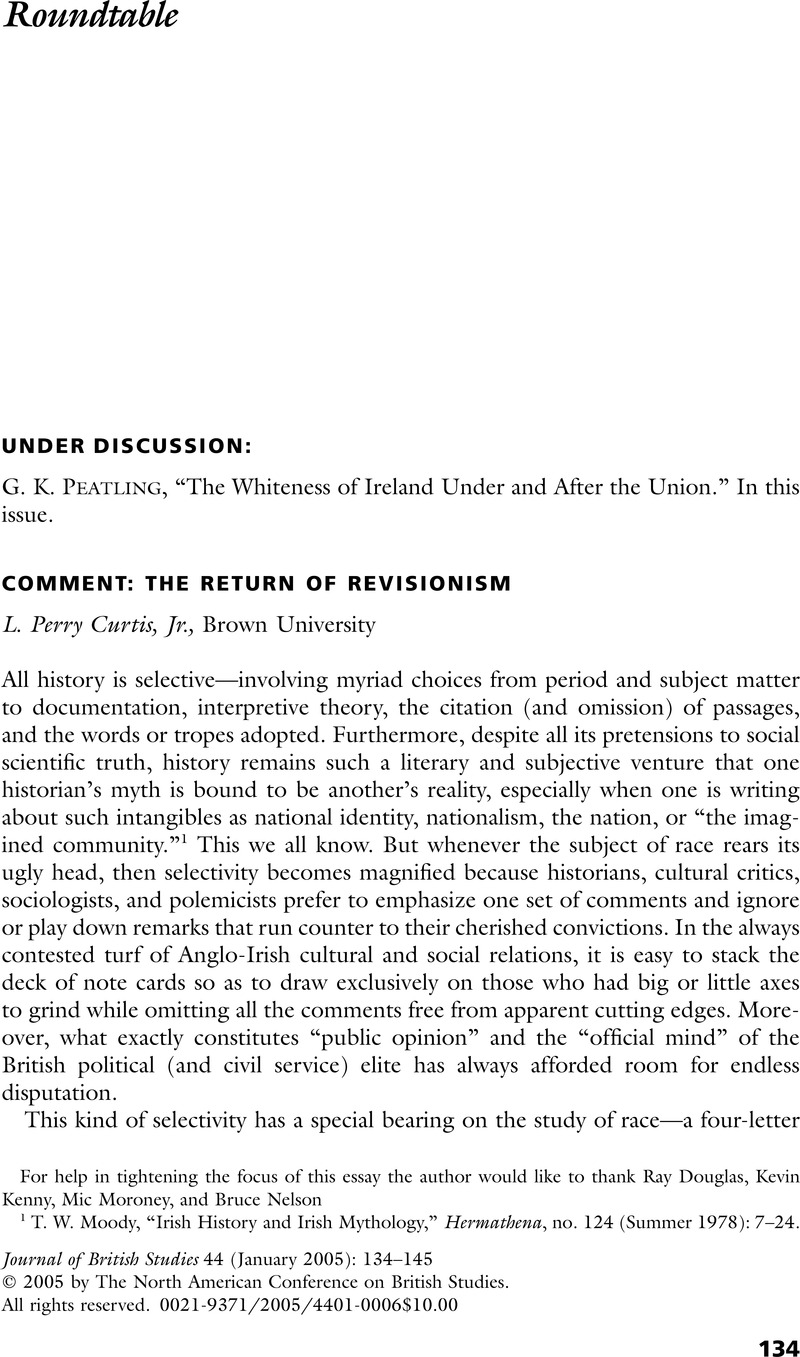No CrossRef data available.
Article contents
The Whiteness of Ireland Under and After the Union. A Response to the Commentators
Published online by Cambridge University Press: 21 December 2012
Abstract

- Type
- Roundtable: G. K. Peatling, “The Whiteness of Ireland Under and After the Union”
- Information
- Copyright
- Copyright © North American Conference of British Studies 2005
References
1 Haines, Robin, Charles Trevelyan and the Great Irish Famine (Dublin, 2004)Google Scholar.
2 Arstein, Walter L., “Victorian Prejudice Reexamined,” Victorian Studies 12, no. 4 (1968–69): 452–57Google Scholar.
3 Curtis, L. P. Jr., Anglo-Saxons and Celts: A Study of Anti-Irish Prejudice in Victorian England (Bridgeport, Conn., 1968), p. 103Google Scholar.
4 Gailey, Andrew, “Unionist Rhetoric and Local Government Reform, 1895–9,” Irish Historical Studies 24 (1984–85): 52–68CrossRefGoogle Scholar; Gailey, Andrew, Ireland and the Death of Kindness: The Experience of Constructive Unionism, 1890–1905 (Cork, 1987)Google Scholar.
5 Ring, Jim, Erskine Childers (London, 1996), p. 91Google Scholar.
6 Cf. Peatling, G. K., British Opinion and Irish Self-Government, 1865–1925: From Unionism to Liberal Commonwealth (Dublin, 2001), pp. 69–70Google Scholar.
7 Peatling, G. K., The Failure of the Northern Ireland Peace Process (Dublin, 2004), pp. 181–87Google Scholar.
8 Ibid., pp. 134–45.
9 Garner, Steve, Racism in the Irish Experience (London, 2004), pp. 198–224Google Scholar.
10 Peatling, G. K., “Globalism, Hegemonism, and British Power: J. A. Hobson and Alfred Zimmern Reconsidered,” History 89, no. 3 (2004): 381–98CrossRefGoogle Scholar.




